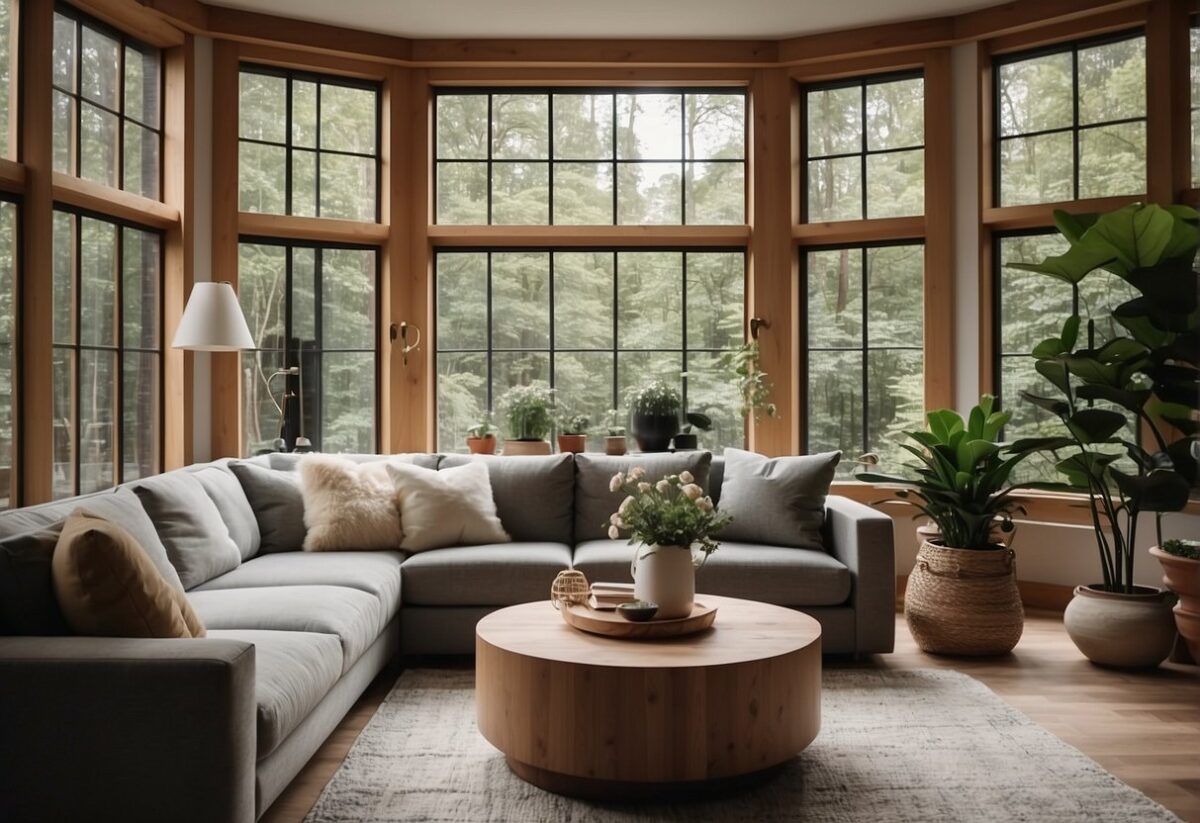In the modern tapestry of home design, you’ll notice that natural materials have taken a prominent role, bringing a blend of sustainability and aesthetic appeal to contemporary spaces. Whether it’s the rich texture of wood grain, the cool touch of stone, or the organic beauty of bamboo, these materials are transforming interiors into soothing sanctuaries. By integrating these elements, you infuse your home with a character that synthetic materials struggle to mimic.
Consider how a piece of furniture crafted from natural wood adds both function and form to your living space. The grains carry a unique story, a silent testament to the tree’s journey. Similarly, when natural light streams across a stone countertop, it highlights the subtleties of its mottled surface. These materials don’t just fill a space; they create an ambiance, an undercurrent of calm that urges you to pause and appreciate the moment.
The movement towards natural materials isn’t just a design choice; it reflects a growing consciousness about the environment and personal wellbeing. By choosing natural materials, you’re not only curating a home that stands out in style but also supports eco-friendly practices. This thoughtful approach to design is not about flashiness but rather a harmony between your living space and the natural world.
Sustainability and Ethics in Material Choice
When you’re selecting materials for your contemporary home, sustainability should be at the forefront of your considerations. Sustainable materials are those that have minimal impact on the environment during their life cycle, from extraction through to disposal. For example, materials that require minimal maintenance and accommodate future adaptation can significantly reduce environmental impact during their lifetime.
In making ethical choices, consider how materials affect not only the environment but also the social and economic aspects of the communities involved in their production. Selecting materials with a lower carbon footprint, which are sourced responsibly, is an integral part of ethical design practices.
- Eco-Friendly Materials: The use of sustainable building materials like bamboo, cork, and recycled steel promotes environmental stewardship.
- Local Sourcing: Opting for local materials reduces transportation emissions and supports the local economy.
- Durability: Choosing materials that are long-lasting decreases the frequency of replacements and waste production.
A culture of material ethics considers how we value and construct objects and the narratives we create around the material world. By embracing a culture of material ethics, you contribute to a more sustainable and just society.
Remember, the role of design doesn’t end at aesthetics; it extends to ethical and sustainable choices that influence the well-being of our planet. Your decisions can pave the way for a healthier home and a healthier world.
Revival of Traditional Techniques
Incorporating traditional materials into your home can bring a unique blend of character and modernity. It’s a way to celebrate cultural roots and the artisanal craftsmanship that has been passed down through generations.
Influence of Cultural Heritage
By integrating natural materials such as adobe and rammed earth, you’re not only drawing from practices that are well-suited to hot climates for their natural insulation, but you’re also giving a nod to the architectural wisdom of past eras. These materials make a comeback in contemporary designs, mainly for their ability to regulate temperature in a sustainable manner. For example, a detailed examination of Contemporary Architecture with Traditional Materials can provide further insight into how these age-old practices are being reimagined today.
Handcrafting and Artisanship
Handcrafted elements in your home can add an authentic and tactile aspect that machine-produced items rarely match. Celebrating local handcrafting traditions might involve bespoke wooden joinery, hand-thrown pottery as functional fittings, or even woven textiles as wall art. Each handcrafted piece contributes not only unique aesthetic qualities but also reflects the continued relevance and appreciation of artisanal skills in our technological age. Embracing craftsmanship in contemporary design can help ensure these skills are preserved and continued.
Innovation in Material Development
In contemporary home design, your choices in materials speak not just to aesthetics but also to sustainability and innovation. Let’s dive into how new materials are changing the landscape of home interiors.
Biomaterials and Biophilic Design
Biomaterials are emerging as front runners in the race towards environmentally conscious design. By integrating mycelium-based materials and living walls, you’re not only bringing a piece of nature into your home but also supporting a sustainable future. These materials are not only recyclable but renewable, leveraging the principles of biophilic design to create more vibrant and greener interiors. For example, mycelium, the root structure of mushrooms, is being harnessed for its durability and its natural origins, making it a remarkable and innovatory option for both construction and aesthetic applications. Detailed insights into how these materials contribute to biophilic design can be discovered by looking at projects that apply this philosophy.
Recycled and Upcycled Materials
Turning to recycled and upcycled materials, you contribute to reducing waste and promoting sustainability. By reusing materials such as glass, wood, and metal, not only are you cutting down on consumption, but you are also infusing your home with unique, storied pieces. Advancements in technology have allowed for the development of high-performance recycled materials that do not compromise on quality or design, effectively giving a second life to what would otherwise be waste. The adaptability of such materials in home design means that creativity is your only limitation. Be inspired by the possibilities these materials offer, from flooring to furniture, and understand their role in the future of home interiors.
Impact on Aesthetic Trends
In contemporary home design, your choice of materials has a profound influence on the look and feel of your living space. The current trend leans towards natural materials that not only create distinctive styles but also promote a connection to nature.
Rustic and Earthy Palettes
You’ll find that a rustic aesthetic typically incorporates elements like natural stone, reclaimed wood, and earthy tones. These materials add warmth and texture, creating spaces that feel grounded and calming. In spaces exhibiting these characteristics, the emphasis often lies on celebrating the imperfections and rich patinas that time and use imbue in natural substances.
Minimalism and Material Focus
Conversely, minimalism champions the ‘less is more’ philosophy, with a strong focus on the raw beauty of materials. Your space may feature polished concrete, glass, and metal, often in their most simple and unadorned forms. This approach centres on the intrinsic qualities of the materials, such as the coolness of stone, the warmth of wood, or the industrial edge of metal. Minimalist spaces are designed to be functional, spacious, and serenely uncluttered, encouraging you to regard each material with newfound appreciation.

